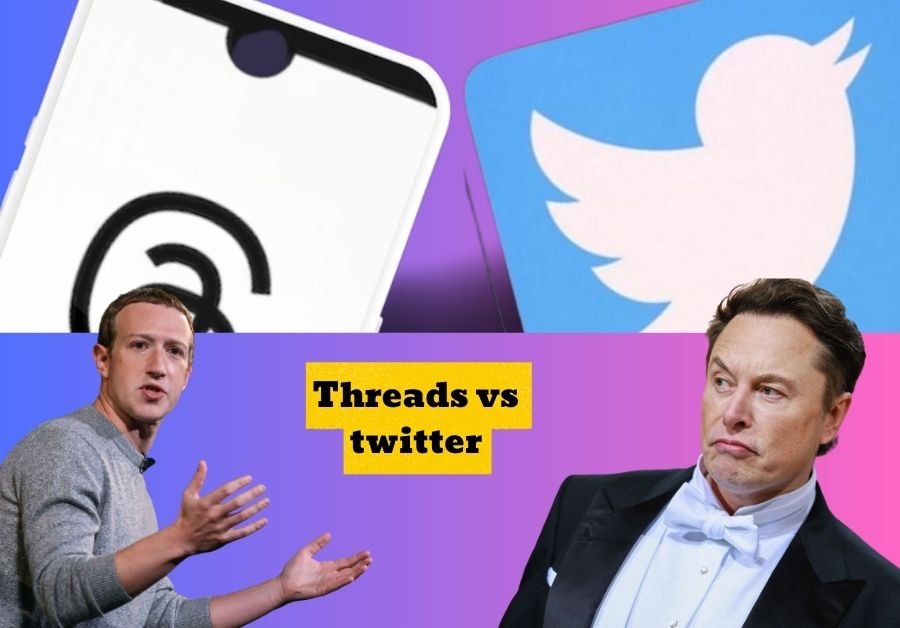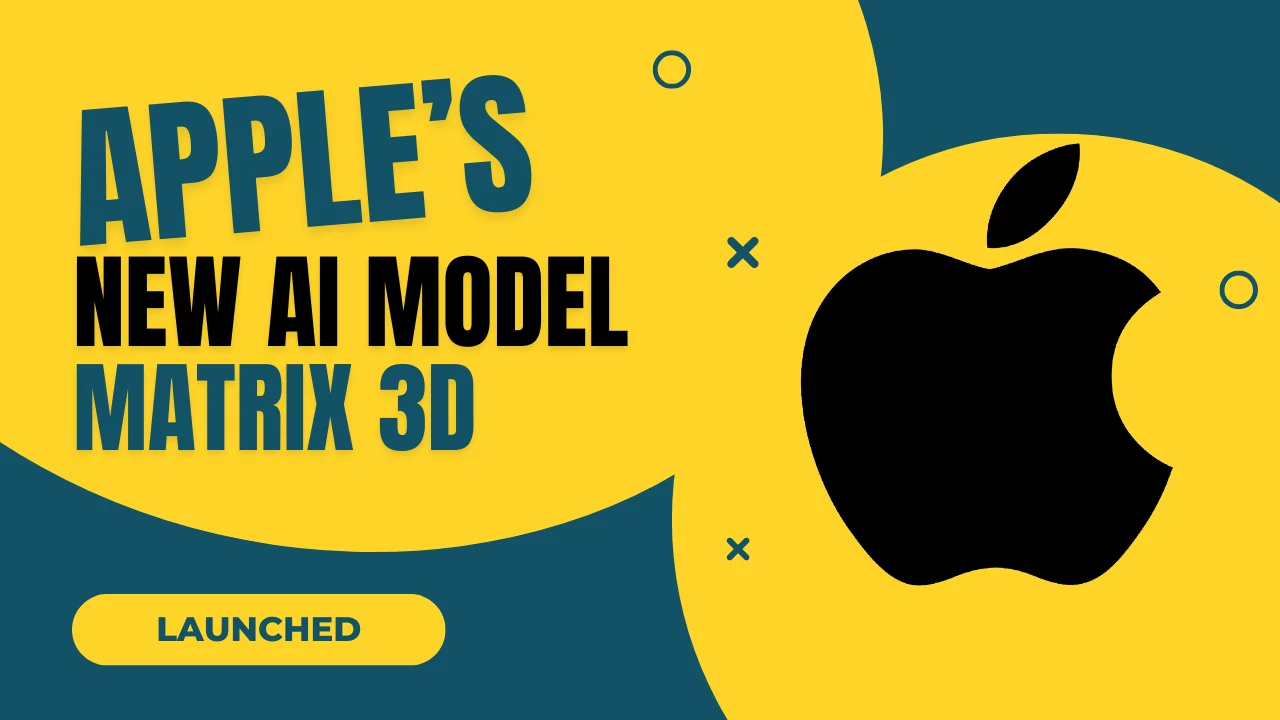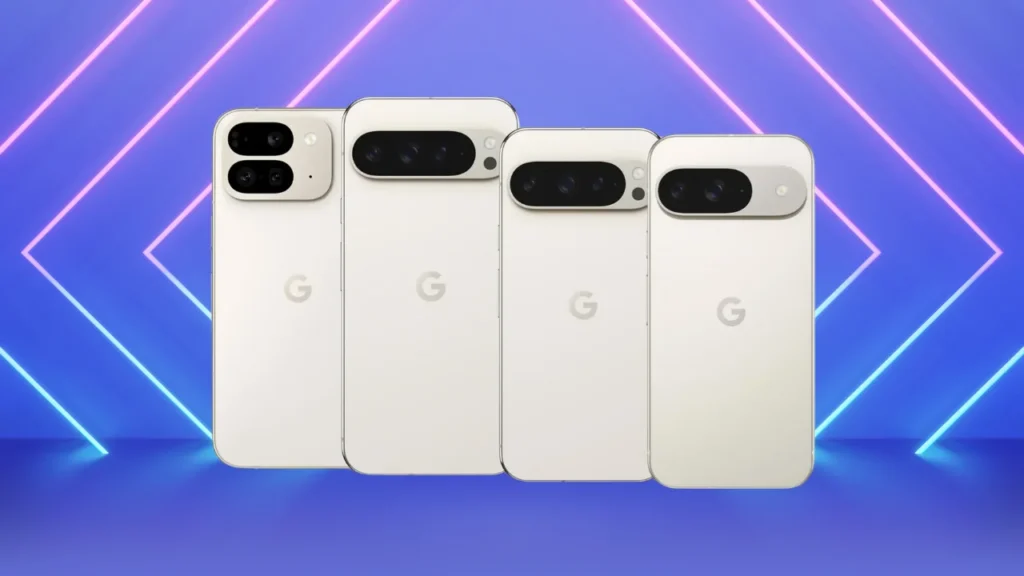Tech
Threads vs Twitter: Which social media platform is right for you?

Threads vs Twitter, Which is the best? A new question featuring the Digital Space. The question gained popularity when Meta announced to release the Rival app against Twitter. Which is Known as Threads app. Threads app by instagram is no doubt an engaging addition to the digital and social media. And it has gained much popularity at the very first hours of its release. Some tech experts are considering it a big threat to the twitter. But its too early to pass these kind of statements as there is a lot of room for improvements for both apps.
In this article, we will comprehensively compare the threads app with the twitter and find out that either the features of the threads app worth it or not. So lets begin!
What is Threads app
Threads app by Instagram is a newly released app by Meta company. And the company claims it the best alternative of twitter. Threads app aims to compete with twitter in all aspects. Also it offers a different user experience from twitter to overcome the dissatisfaction of the twitter users. The threads app release by Meta is not Threads vs Twitter but Mark Zuckerberg vs Elon Musk. However, the User experience has been changed in the new threads app but the features of Retweet, Share and likes are kept only by changing the name of retweet to Repost.
Threads Popularity
The new threads app has become the most downloaded app in just the few hours of its release. It reached over 22 million users in just a few hours. The reason behind this magic popularity of Threads is that it has been released by a well known company which has already billions of users. So the new app was pre promoted by Meta. And the second reason is that many Twitter users were dissatisfied with new money making policies of Elon Musk. Which compelled them to turn their face towards Threads app.
How to use and make account on threads app
For using Threads app you Don’t need to make an account on it. You only need to have an instagram account to use the threads app. So the question arises that can I use threads app without Instagram? The answer is NO. As threads app is only available for the users which have active Instagram account. If you want to use threads app and don’t have Instagram Account, You should first sign up For Instagram and then you can easily use threads app. Because when you open threads, there is only one option for login, and that is Login with Instagram.
By logging in to the threads app by using your Instagram account, you does not lose your Insta activity. And you can fetch the instagram account data to your threads app. That is the feature which makes it more engaging.
Threads’ success without ads: Monetization Policy
Initially, Meta has decided not to monetize the platform until it reaches 1 Billion Users. That also boosts the user interface of the app. As there are no ads running, you can enjoy the latest posts from your community. That is also a marketing strategy to boost up the user number of thread app. So we can say that threads is leading to the success without ads or monetization.
Threads integration with Instagram
The most valuable feature of threads app is its integration with Instagram. By this feature the content creators on instagram can migrate their followers to the new threads app. And in this way, they don’t have to wait for growing followers. They instantly get the reward of the hardwork they have done on instagram on threads app. Similarly you can also follow the same accounts on threads which you have recently followed on instagram. And yes Off course, for doing this they also should have an account on threads app. It means that they also should have connected their Instagram with the threads app.
Why Engagement is Higher on Threads: Insights from Users and Experts
Here are some features of the Threads app that can contribute to its potential success:
- Integration with Instagram: Threads requires users to have an Instagram account, which helps reduce bot activity and provides a built-in follower base. The integration allows for seamless migration and automatic following of Instagram followers on Threads.
- Ad-free experience: Unlike Twitter, Threads launches without ads, creating a more enjoyable and focused user experience.
- Sense of belonging: Threads aims to create a community where users feel like everyone is already present, fostering excitement and engagement.
- Fear of missing out (FOMO): The app ranks users based on registration time, adding a competitive element and encouraging users to sign up early. Users can also pre-emptively add people, capitalizing on the anticipation of others joining the platform.
- Enhanced engagement: Users on Threads report higher engagement compared to other platforms. This could be attributed to the sense of community, the automatic following of existing Instagram followers, and the excitement surrounding the app’s launch.
6 Reasons why Threads can be a Threat to Twitter
Yes, Threads has the potential to be a threat to Twitter. Here’s how:
- Unique User Experience: Threads offers a different user experience compared to Twitter, focusing on creating a sense of community, belonging, and excitement. This can attract users who are dissatisfied with Twitter’s current platform and looking for an alternative.
- Integration with Instagram: The integration with Instagram gives Threads an advantage by leveraging the existing user base of Instagram. This reduces the barrier to entry for users who are already active on Instagram and encourages them to try out Threads. The seamless migration of Instagram followers to Threads also helps creators by providing an instant follower base.
- Higher Engagement: Users have reported higher engagement on Threads compared to other platforms. This could be due to the automatic following of existing Instagram followers, the fear of missing out (FOMO) factor, and the absence of ads, creating a more enjoyable user experience.
- Zero Ads and Monetization Delay: Threads launches without ads and Meta has stated that they won’t focus on monetization until the app reaches a billion users. This approach contrasts with Twitter’s increasing ad presence and can be appealing to users who are tired of frequent advertisements.
- Potential for Scale: With Meta’s backing and the vast user base of Instagram, Threads has the potential to reach a large number of users. If it manages to attract a substantial user base, it could surpass Twitter’s user count, giving it a competitive edge.
- Room for Improvement: While Threads currently lacks some key features that Twitter offers, such as trending topics, Meta has plans to incrementally add features and improve the app. As Threads evolves and addresses its limitations, it could become a more compelling alternative to Twitter.
Threads vs Twitter: A battle of privacy and trust
Now we are going to do the detailed comparison between Threads and Twitter. Here is the comparison features of threads and Twitter.
User Base and Reach
If we discuss about the user base of twitter, it is massive. And similarly the user base of Meta platforms is also a huge number. But the problem arises when it comes to the data protection of their users. As we know that in just few hours, Threads has reached over 22 Million user base, but can they protect their personal Data? Lets have a look on recent Data Breaches of Facebook, Instagram and twitter.
Threads vs Twitter data breaches
As far as Data breaches is concerned, both the companies has faced these kind of failures. And it is common that a company with large user base has been targeted for data breach. But let see which data breach mostly affected the users the most.
Facebook’s Cambridge Analytica Scandal (2018)
This scandal was the biggest data Breach Scandal in 2018. A political consulting firm obtained the data of millions of users of Facebook without their consent. This scandal downgraded the trust score of Facebook and Facebook lose the trust of its loyal users.
Instagram’s Data Leak (2017)
Before Facebook Data Leaks scandal, Instagram has also faced the same thing. But at that time, Instagram was not acquired by Meta. In 2017, Instagram’s API malfunctioned and allowed hackers to access personal information of users. The data leak exposed the email addresses and mobile numbers of millions of instagram users.
Twitter’s Data Breach (2020)
Twitter’s Data breach was also a security breach, that targeted high profile accounts and companies. The purpose of the breach was cryptocurrency scam. Hackers gained unauthorized access and were asking the followers to send them bitcoins.
The most dangerous Data breach was the Facebook’s Cambridge Analytica scandal. As the number of users affected was very high. And the information was used for political purposes, Due to which Facebook started losing fans.
That’s why, Threads, which is the product of Meta, should be made fully secured. And also should follow major protocols for the data protection.
Features of twitter that makes it dominant over threads app
Here are some potential features of Twitter that contribute to its dominance over Threads:
Established User Base:
Twitter has a well-established and expansive user base, with millions of active users worldwide. Its longevity and large user community make it a go-to platform for real-time updates, discussions, and breaking news.
Trending Topics and News Discovery:
Twitter’s trending topics feature allows users to explore popular conversations and stay updated on the latest news and events. This feature differentiates Twitter as a news-first platform and offers users a comprehensive view of ongoing discussions.
Real-Time Engagement:
Twitter’s fast-paced and real-time nature enables users to engage in immediate conversations, respond to tweets, and participate in live events or discussions. The platform’s instantaneous feedback loop fosters interactive and dynamic engagement.
Robust Search and Discovery: Twitter’s advanced search capabilities allow users to find specific tweets, hashtags, or accounts based on their interests. The platform’s algorithmic suggestions and personalized recommendations help users discover new content and accounts relevant to their preferences.
Verified Accounts and Influencer Culture:
Twitter’s verified accounts feature adds credibility and authenticity to high-profile individuals, brands, and public figures. This verification system, combined with the platform’s influencer culture, attracts users who seek direct access to influential voices and thought leaders.
Extensive Third-Party Integration: Twitter offers a wide range of APIs and integrations that enable developers to create third-party applications, analytics tools, and social media management platforms. This ecosystem promotes innovation and extends the platform’s functionalities beyond its core features.
Threaded Conversations and Retweet Culture:
Twitter’s threaded conversations and retweet functionality allow users to engage in multi-participant discussions, share and amplify content, and contribute to viral trends. The platform’s retweet culture helps content reach a broader audience and promotes virality.
Hashtags and Topic Organization:
Twitter’s effective use of hashtags allows users to categorize and organize conversations around specific topics or events. Hashtags make it easier to discover and participate in discussions on subjects of interest, driving engagement and community building.
Advertising and Monetization Opportunities:
Twitter provides advertising options for brands and businesses to reach their target audiences, offering various ad formats and targeting capabilities. Its monetization strategies, including promoted tweets and accounts, provide revenue opportunities for content creators and influencers.
The Future of Threads App: What to Expect in the Next Release
Here are some potential improvements Instagram should consider in the new release of threads app. That could contribute to the success of the Threads app:
Enhanced Privacy Features:
Given the concerns surrounding data privacy, implementing robust privacy features within the Threads app would be crucial. This could include clear and transparent data handling policies, giving users more control over their data, and implementing stringent security measures to protect user information.
Trending Topics and News Integration:
To differentiate itself from other platforms and attract users seeking real-time news and discussions, Threads could introduce trending topics and news integration features. This would allow users to stay informed about current events and engage in conversations around popular topics, making Threads a go-to platform for news and discussions.
Customization and Personalization:
Providing users with options for customization and personalization of their profiles and feeds can enhance user engagement. This could include features such as customizable themes, layout options, and the ability to prioritize content from specific users or topics of interest.
Content Moderation and Safety Measures:
Implementing robust content moderation and safety measures is essential to maintain a positive and safe user experience. Threads should invest in effective algorithms and human moderation to identify and remove inappropriate or harmful content promptly. This would help create a welcoming environment for users and foster trust in the platform.
Monetization Strategies for Creators:
As Threads grows and attracts more creators, introducing monetization strategies for them would be beneficial. This could include options for creators to earn revenue through partnerships, sponsored content, or ad placements, thereby incentivizing content creation and attracting influential individuals to the platform.
User Feedback and Iterative Updates:
Continuously seeking user feedback and making iterative updates based on user needs and preferences is vital. Incorporating user suggestions, fixing bugs, and addressing concerns promptly can help improve the user experience and demonstrate a commitment to user satisfaction.
Tech
GPT-5 Launched: Revolutionary Features That Make Chat GPT 5 the Most Advanced AI Model Yet

Introduction to GPT 5:A New Era of AI Starts Now
OpenAI has officially released GPT-5, and it’s not just an upgrade; it’s a step forward in the future of AI. GPT-5 was made to combine never-before-seen capability with unrivaled flexibility. Its goal is to change the way people engage with AI.
This paradigm gives developers, researchers, marketers, and regular users a better, faster, and more dependable experience than anything else.
In this article, we’ll talk about the main characteristics, unique skills, and reasons why GPT-5 is already being called the most powerful AI model in the world.
One AI System—No More Switching Models
The smart routing system is one of the most groundbreaking new features in GPT-5.
In the past, consumers had to choose between multiple models for certain activities, including fast, big, or cheap. Now, GPT-5 automatically picks the best version for your question: Deep Reasoning Mode turns on when you need to solve a complex problem in more than one stage. Speed Mode: Uses lighter versions for jobs that are quick and easy. Efficiency Mode: This mode balances performance and resource use without lowering quality. With this unified architecture, you always receive the best results, whether you’re looking for brief data or making complicated applications.
PhD-Level Intelligence with 45% Fewer Mistakes
OpenAI says that GPT-5 goes from being “high-schooler” smart (GPT-3) to being a PhD-level expert.
It’s not only smarter; it’s also a lot more accurate: There are 45% fewer factual mistakes than in GPT-4o. Better at knowing itself—knows when it doesn’t know the answer. Better logical reasoning for use in school, research, and work. This means that GPT-5 is a much more reliable partner for important tasks like making decisions with a lot at risk, doing scientific research, and developing commercial plans.
GPT 5 is Your own AI coder and creative partner
For developers and designers, GPT-5 is a total game-changer: One-Prompt App Creation: You can make whole websites, apps, and even games using only one descriptive prompt. Aesthetic-Aware Design makes layouts and user interfaces that not only work, but also look good. Advanced Debugging lets you easily navigate huge codebases and fix hard bugs. Writers, marketers, and content creators may also use GPT-5 to brainstorm, write, and improve content in a way that is similar to how humans do it. This makes it a real creative partner.
Integration of all tools into one
Everything you need is in one spot with GPT 5. It combines all of OpenAI’s features into one smooth interface, so you don’t have to switch tabs or modes anymore: Web browsing in real time for data. DALL-E 3 makes images for creative purposes. Voice Interaction for talking like a real person. Collaborative Canvas lets you brainstorm and develop together in real time. This unified method saves time and makes it easy to mix text, graphics, and interactive elements in unique ways.
Personalization Like Never Before
GPT-5 doesn’t just understand what you ask; it also learns about you. You can choose its tone and style by using built-in “personalities”: Cynic: funny and doubtful. Robot: Straightforward and formal. Listener: understanding and communicative. Nerd: full of details and technological stuff. This makes GPT 5 more like a person and lets you change it to fit your needs, making it great for anything from casual conversations to professional advice.
What Makes GPT-5 a Paradigm Shift
GPT-5 is not merely faster or bigger like most model improvements. It is also more human-aligned in a fundamental way: Accuracy and trustworthiness that have never been seen before. Easily adapting to the difficulty of the task. One interface with real multi-modal capability. diverse requirements call for diverse ways of interacting. Everyone can use the latest AI for free, which makes AI technology more accessible.
Final Thoughts: The Future of AI Is Here
GPT-5 is the beginning of a new era in the history of AI. It is the most advanced AI model to date since it can think deeply, reply quickly, make things look beautiful, and change without any problems. As businesses look into what this technology can do, from making software automatically to analyzing data in real time, one thing is for sure: Chat GPT 5 will change the way we work, learn, and make things.
Frequently Asked Questions About GPT-5
1. What is GPT-5?
GPT-5 is OpenAI’s latest and most advanced AI model, designed to deliver higher accuracy, faster responses, and a unified experience by automatically selecting the best model for each task.
2. What makes GPT-5 better than GPT-4?
GPT-5 has 45% fewer factual errors, offers PhD-level reasoning, includes a smart routing system for optimal performance, and integrates all AI tools like web browsing, image generation, and voice interaction into one interface.
3. Can GPT-5 create apps and websites?
Yes. GPT-5 can build complete apps, websites, and even games from a single descriptive prompt, with both functional code and aesthetic design choices.
4. Does GPT-5 have personalization options?
Yes. GPT-5 allows users to choose from preset personalities like Cynic, Robot, Listener, and Nerd, tailoring tone and style to individual preferences.
5. Is GPT 5 available for free?
OpenAI has made GPT 5’s core capabilities available to free users, giving wider access to its powerful reasoning, creation, and research features.
Tech
Apple’s New AI Model Matrix3D: Transforming 2D Photos Into Immersive 3D Worlds
Apple’s groundbreaking AI model, Matrix3D, turns simple 2D images into stunning 3D environments with unmatched precision. Developed in collaboration with top researchers, this open-source innovation could revolutionize AR, gaming, and digital design. Explore its potential today!

Apple has once again pushed the boundaries of innovation with the debut of Matrix3D, a revolutionary AI model designed to convert ordinary 2D images into rich, interactive 3D environments. Developed in partnership with researchers from Nanjing University and the Hong Kong University of Science and Technology, this cutting-edge technology promises to redefine how we approach 3D content creation, photogrammetry, and augmented reality experiences.
What Makes Matrix3D a Game-Changer?
At its core, Matrix3D is a versatile AI powerhouse built to tackle multiple photogrammetric challenges simultaneously. Unlike traditional tools that require specialized hardware or extensive datasets, Apple’s new AI model simplifies the process with three groundbreaking capabilities:
- Precision Pose Estimation
The model intelligently calculates the exact position and orientation of a camera when a photo was taken—critical for mapping objects in 3D space. - Depth Prediction Mastery
By analyzing subtle visual cues, Matrix3D predicts the distance between objects and the camera, creating detailed depth maps that form the backbone of 3D scenes. - Novel View Synthesis Magic
Ever wished to see a scene from a completely new angle? Matrix3D generates realistic alternative perspectives using just a handful of existing images.
The secret sauce lies in its multi-modal diffusion transformer (DiT), which merges diverse data types—images, camera parameters, depth information—into a unified 3D representation. What’s even more impressive? Its masked learning technique allows the model to train effectively on incomplete datasets, bypassing a major hurdle in AI development.
Why Matrix3D Stands Out in AI-Driven 3D Modeling

- Works Wonders With Minimal Input
Forget needing dozens of photos. Matrix3D can reconstruct intricate 3D scenes from just 1-3 images, democratizing high-quality 3D modeling for casual users and professionals alike. - All-in-One Photogrammetry Tool
By combining pose estimation, depth mapping, and view synthesis into a single workflow, Apple’s AI model eliminates the need for multiple specialized tools. - Hollywood-Grade Realism
The model’s ability to interpret lighting, textures, and spatial relationships results in strikingly lifelike 3D environments that mirror real-world physics. - Open-Source Collaboration
In a bold move, Apple has open-sourced Matrix3D’s code and pre-trained models on GitHub, inviting developers and researchers worldwide to build upon its framework.
The Future of iPhones, AR, and Digital Creativity
Though still in the research phase, Matrix3D’s potential applications are staggering. Imagine iPhone users snapping a few photos of their living room and instantly generating a 3D model for AR furniture shopping—or educators creating immersive history lessons from museum exhibit snapshots. For developers, this technology could accelerate workflows in gaming, virtual design, and even 3D printing.
Apple’s commitment to blending AI with creative tools hints at a future where spatial computing becomes as intuitive as taking a selfie. With rivals like Google and Meta investing heavily in 3D AI, Matrix3D positions Apple as a frontrunner in the race to dominate AR/VR ecosystems.
How to Explore Matrix3D Today
Curious to experiment with this technology? Apple has laid out a treasure trove of resources:
- In-Depth Research Paper: Dive into the technical architecture and training methodologies.
- GitHub Repository: Access the full codebase, pre-trained models, and setup guides to kickstart your projects.
Whether you’re a developer aiming to build the next-gen AR app or a digital artist exploring new mediums, Matrix3D offers a playground for innovation.
Final Thoughts: A New Era for Accessible 3D Design
Apple’s Matrix3D isn’t just another AI model—it’s a paradigm shift. By turning everyday photos into dynamic 3D worlds, it lowers barriers to advanced photogrammetry and empowers creators at all skill levels. As this technology evolves, we might soon see it integrated into Apple’s consumer products, making 3D content creation as commonplace as editing a video on your iPhone.
For now, the open-source release sparks endless possibilities. One thing’s certain: the line between physical and digital realms is about to get even blurrier.
Ready to explore the future of 3D AI? Head to Apple’s GitHub repository and join the revolution.
Tech
From Tensor G5 to AI Magic: What’s New in the Google Pixel 10
The smartphone landscape is heating up, and Google Pixel 10 series is poised to make waves. Following the well-received Pixel 9, which narrowed the gap with Apple and Samsung flagships, the Pixel 10 is shaping up to be Google’s most ambitious phone yet. From a groundbreaking chipset to AI-driven innovations, here’s everything we know—plus new insights—about the Pixel 10’s potential to disrupt the premium smartphone market.
1. Tensor G5: Google’s Big Bet on TSMC’s 3nm Power
The most significant leak so far confirms Google is ditching Samsung Foundry for TSMC to manufacture its Tensor G5 chip. Unlike the Tensor G4’s 4nm process, TSMC’s cutting-edge 3nm technology promises 20-30% better efficiency and 15% faster performance, addressing long-standing complaints about overheating and battery drain in earlier Pixels.
Why This Matters:
- Samsung’s Exynos-based Tensor chips often lagged behind rivals in thermal management. TSMC’s track record with Apple’s A-series and Snapdragon chips could finally give Google a competitive edge.
- Leaked benchmarks hint at Tensor G5 matching the Snapdragon 8 Gen 4 in multi-core tasks, a first for Pixel.
- Improved AI accelerators may enable on-device Gemini Ultra capabilities, enabling real-time video processing and smarter Assistant features.
2. Aggressive Pricing: A Direct Challenge to Apple and Samsung
Rumors suggest the Pixel 10 will undercut the iPhone 17 by nearly $120 in key markets. With Apple iPhone 16e already facing criticism for its $699 ‘budget’ tag, Google seems determined to lure premium buyers with flagship specs at mid-range prices.
Strategic Implications:
- Google’s smartphone market share sits at just 4% globally (IDC Q2 2024). Competitive pricing could help it capitalize on Apple/Samsung fatigue.
- Analysts speculate Google might absorb costs to promote its ecosystem (e.g., Pixel + Gemini AI subscriptions).
3. Battery & Cooling: Fixing the Pixel’s Achilles’ Heel
The switch to TSMC’s 3nm process isn’t just about speed. Early prototypes suggest:
- 5,200mAh battery for the Pixel 10 Pro XL (up from 4,600mAh in Pixel 9 Pro XL).
- Graphene-based cooling systems to prevent thermal throttling during prolonged AI tasks.
- “All-day” battery life targets, even with always-on AI features like Gemini-powered ambient sensing.
4. Design: Balancing Ergonomics and Aesthetics
The Pixel 9’s flat-edge design polarized users. For the Pixel 10, Google is reportedly testing:
- A slightly curved aluminum frame for better grip.
- Thinner bezels (1.2mm, down from 1.5mm) and a 6.3-inch Pro model with a 120Hz LTPO AMOLED display.
- A matte-textured back panel inspired by the Pixel Fold, paired with brighter, customizable “Gemini Glow” accent colors.
5. Cameras: AI Over Hardware? Not So Fast
While leaks emphasize AI upgrades, hardware isn’t being ignored:
- New sensor details: A 1/1.12-inch 50MP main sensor (up from 1/1.31-inch) for better low-light shots.
- AI editing suite: “Studio” mode for video (background noise removal, auto-framing) and “Perfect Group Shot” to merge faces from multiple photos.
- Pro-level video: 4K/120fps recording and Cinematic Lookout (AI-generated bokeh adjustments).
Pixel 10 Series Lineup: Four Models, One Foldable

Google is expanding its roster to include:
- Pixel 10 (6.1-inch)
- Pixel 10 Pro (6.3-inch)
- Pixel 10 Pro XL (6.8-inch)
- Pixel 10 Pro Fold (7.6-inch inner display)
The Pro Fold is the wildcard, rumored to feature a self-healing crease and a redesigned hinge. With Samsung dominating foldables, Google’s entry could push app optimization for Android’s foldable ecosystem.
Launch Timeline: Why Google Is Waiting
A delayed October 2025 launch (vs. the Pixel 9’s August debut) suggests Google is prioritizing Tensor G5 refinement. This aligns with TSMC’s 3nm production schedule, which is also supplying Apple’s A19 chips.
The Bottom Line: Can Pixel 10 Compete?
Google is doubling down on AI, affordability, and hardware polish. If leaks hold, the Pixel 10 could rival the iPhone 17 and Galaxy S25 in performance while undercutting them on price. However, challenges remain:
- Carrier partnerships: Limited carrier support in the U.S. has hindered Pixel sales.
- Global availability: Pixels still aren’t sold in key markets like India’s offline stores.
With Samsung and Apple investing heavily in generative AI, Google’s early-mover advantage in on-device AI could fade by 2025. But for now, the Pixel 10 looks like Google’s strongest bid yet for a seat at the premium table.
(Sources: 9to5Google, Android Authority, and industry analyst Ming-Chi Kuo.)


















